|
Naunet
Nu ("Watery One") or Nun ("The Inert One") ( Ancient Egyptian: ; Coptic: ), is the personification of the primordial watery abyss which existed at the time of creation and from which the creator sun god Ra arose, in ancient Egyptian religion. Nu is one of the eight deities of the Ogdoad representing ancient Egyptian primordial Chaos from which the primordial mound arose from. Nun can be seen as the first of all the gods and the creator of reality and personification of the cosmos. Nun is also considered the god that will destroy existence and return everything to the Nun from whence it came. No cult was addressed to Nun. The consort of Nun was the goddess Nunut or Naunet ( Ancient Egyptian: ). Name The name on Nu is paralleled with "inactivity" in a play of words in, "I raised them up from out of the watery mass [], out of inactivity []". The name has also been compared to the Coptic ''noun'' "abyss; deep". Origin myth The ancient Egyptians envisaged the oceanic abyss o ... [...More Info...] [...Related Items...] OR: [Wikipedia] [Google] [Baidu] |
Heh (god)
Ḥeḥ (''ḥḥ'', also Huh, Hah, Hauh, Huah, and Hehu) was the personification of infinity or eternity in the Ogdoad in ancient Egyptian religion.Wilkinson, Richard H. (2003). ''The Complete Gods and Goddesses of Ancient Egypt''. Thames & Hudson. p. 109 His name originally meant "flood", referring to the watery chaos that the Egyptians believed existed before the creation of the world. The Egyptians envisioned this chaos as infinite, in contrast with the finite created world, so Heh personified this aspect of the primordial waters. Heh's female counterpart was known as Hauhet, which is simply the feminine form of his name. Like the other concepts in the Ogdoad, his male form was often depicted as a frog, or a frog-headed human, and his female form as a snake or snake-headed human. The frog head symbolised fertility, creation, and regeneration, and was also possessed by the other Ogdoad males Kek, Amun, and Nun. The other common representation depicts him crouching, holding ... [...More Info...] [...Related Items...] OR: [Wikipedia] [Google] [Baidu] |
Amun
Amun (; also ''Amon'', ''Ammon'', ''Amen''; egy, jmn, reconstructed as ( Old Egyptian and early Middle Egyptian) → (later Middle Egyptian) → ( Late Egyptian), cop, Ⲁⲙⲟⲩⲛ, Amoun) romanized: ʾmn) was a major ancient Egyptian deity who appears as a member of the Hermopolitan Ogdoad. Amun was attested from the Old Kingdom together with his wife Amunet. With the 11th Dynasty ( 21st century BC), Amun rose to the position of patron deity of Thebes by replacing Montu. After the rebellion of Thebes against the Hyksos and with the rule of Ahmose I (16th century BC), Amun acquired national importance, expressed in his fusion with the Sun god, Ra, as Amun-Ra (alternatively spelled Amon-Ra or Amun-Re). Amun-Ra retained chief importance in the Egyptian pantheon throughout the New Kingdom (with the exception of the " Atenist heresy" under Akhenaten). Amun-Ra in this period (16th to 11th centuries BC) held the position of transcendental, self-created creator d ... [...More Info...] [...Related Items...] OR: [Wikipedia] [Google] [Baidu] |
Boat
A boat is a watercraft of a large range of types and sizes, but generally smaller than a ship, which is distinguished by its larger size, shape, cargo or passenger capacity, or its ability to carry boats. Small boats are typically found on inland waterways such as rivers and lakes, or in protected coastal areas. However, some boats, such as the whaleboat, were intended for use in an offshore environment. In modern naval terms, a boat is a vessel small enough to be carried aboard a ship. Boats vary in proportion and construction methods with their intended purpose, available materials, or local traditions. Canoes have been used since prehistoric times and remain in use throughout the world for transportation, fishing, and sport. Fishing boats vary widely in style partly to match local conditions. Pleasure craft used in recreational boating include ski boats, pontoon boats, and sailboats. House boats may be used for vacationing or long-term residence. Lighters are use ... [...More Info...] [...Related Items...] OR: [Wikipedia] [Google] [Baidu] |
Solar Deity
A solar deity or sun deity is a deity who represents the Sun, or an aspect of it. Such deities are usually associated with power and strength. Solar deities and Sun worship can be found throughout most of recorded history in various forms. The Sun is sometimes referred to by its Latin name ''Sol'' or by its Greek name ''Helios''. The English word ''sun'' derives from Proto-Germanic *''sunnǭ''. Overview Predynasty Egyptian beliefs attribute Atum as the Sun god and Horus as god of the sky and Sun. As the Old Kingdom theocracy gained influence, early beliefs were incorporated into the expanding popularity of Ra and the Osiris-Horus mythology. Atum became Ra-Atum, the rays of the setting Sun. Osiris became the divine heir to Atum's power on Earth and passed his divine authority to his son, Horus. Other early Egyptian myths imply that the Sun is incorporated with the lioness Sekhmet at night and is reflected in her eyes; or that the Sun is found within the cow Hathor du ... [...More Info...] [...Related Items...] OR: [Wikipedia] [Google] [Baidu] |
Book Of Gates
The Book of Gates is an ancient Egyptian funerary text dating from the New Kingdom. It narrates the passage of a newly deceased soul into the next world, corresponding to the journey of the sun through the underworld during the hours of the night. The soul is required to pass through a series of 'gates' at different stages in the journey. Each gate is associated with a different goddess, and requires that the deceased recognise the particular character of that deity. The text implies that some people will pass through unharmed, but that others will suffer torment in a lake of fire. Categories The most famous part of the ''Book of Gates'' today refers to the different races of humanity known to the Egyptians, dividing them up into four categories that are now conventionally labelled "Reth" (Egyptians), "Aamu" (Asiatics), "Nehesu" (Nubians), and "Themehu" ( Libyans). These are depicted in procession entering the next world. The text and images associated with the Book of Ga ... [...More Info...] [...Related Items...] OR: [Wikipedia] [Google] [Baidu] |
Dendera
Dendera ( ar, دَنْدَرة ''Dandarah''; grc, Τεντυρις or Τεντυρα; Bohairic cop, ⲛⲓⲧⲉⲛⲧⲱⲣⲓ, translit=Nitentōri; Sahidic cop, ⲛⲓⲧⲛⲧⲱⲣⲉ, translit=Nitntōre), also spelled ''Denderah'', ancient Iunet 𓉺𓈖𓏏𓊖 “jwn.t”, Tentyris or Tentyra is a small town and former bishopric in Egypt situated on the west bank of the Nile, about south of Qena, on the opposite side of the river. It is located approximately north of Luxor and remains a Latin Catholic titular see. It contains the Dendera Temple complex, one of the best-preserved temple sites from ancient Upper Egypt. Etymology The original name of the town is , the etymology of which is unknown. It was later complemented by the name of the chief goddess Hathor and became Egyptian which is the source of cop, ⲛⲓⲧⲉⲛⲧⲱⲣⲓ, translit=Nitentōri or just "of the goddess", which is the source of grc-x-koine, Τεντυρις. The modern Arabic name of t ... [...More Info...] [...Related Items...] OR: [Wikipedia] [Google] [Baidu] |
Karnak
The Karnak Temple Complex, commonly known as Karnak (, which was originally derived from ar, خورنق ''Khurnaq'' "fortified village"), comprises a vast mix of decayed temples, pylons, chapels, and other buildings near Luxor, Egypt. Construction at the complex began during the reign of Senusret I (reigned 1971–1926 BCE) in the Middle Kingdom (around 2000–1700 BCE) and continued into the Ptolemaic Kingdom (305–30 BCE), although most of the extant buildings date from the New Kingdom. The area around Karnak was the ancient Egyptian ''Ipet-isut'' ("The Most Selected of Places") and the main place of worship of the 18th Dynastic Theban Triad, with the god Amun as its head. It is part of the monumental city of Thebes, and in 1979 it was inscribed on the UNESCO World Heritage List along with the rest of the city. The Karnak complex gives its name to the nearby, and partly surrounded, modern village of El-Karnak, north of Luxor. Overview The complex is a vast open si ... [...More Info...] [...Related Items...] OR: [Wikipedia] [Google] [Baidu] |
Solar Barque
Solar barques were the vessels used by the sun god Ra in ancient Egyptian mythology. During the day, Ra was said to use a vessel called the Mandjet ( egy, mꜥnḏt) or the Boat of Millions of Years ( egy, wjꜣ-n-ḥḥw), and the vessel he used during the night was known as the Mesektet ( egy, msktt). Ra was said to travel through the sky on the barge, providing light to the world. Each twelfth of his journey formed one of the twelve Egyptian hours of the day, each overseen by a protective deity. Ra then rode the barque through the underworld, with each hour of the night considered a gate overseen by twelve more protective deities. Passing through all of these while fending off various destructive monsters, Ra reappeared each day on the eastern horizon. He was said to travel across the sky in the Mandjet Barque through the hours of the day, and then switch to the Mesektet Barque to descend into the underworld for the hours of the night. The progress of Ra upon the Mandjet ... [...More Info...] [...Related Items...] OR: [Wikipedia] [Google] [Baidu] |
Nun Raises The Sun
A nun is a woman who vows to dedicate her life to religious service, typically living under vows of poverty, chastity, and obedience in the enclosure of a monastery or convent.''The Oxford English Dictionary'', vol. X, page 599. The term is often used interchangeably with religious sisters who do take simple vows but live an active vocation of prayer and charitable work. In Christianity, nuns are found in the Roman Catholic, Oriental Orthodox, Eastern Orthodox, Lutheran, and Anglican traditions, as well as other Christian denominations. In the Buddhist tradition, female monastics are known as Bhikkhuni, and take several additional vows compared to male monastics (bhikkhus). Nuns are most common in Mahayana Buddhism, but have more recently become more prevalent in other traditions. Christianity Catholicism In the Catholic tradition, there are many religious institutes of nuns and sisters (the female equivalent of male monks or friars), each with its own charism ... [...More Info...] [...Related Items...] OR: [Wikipedia] [Google] [Baidu] |
Abydos, Egypt
Abydos ( ar, أبيدوس, Abīdūs or ; Sahidic cop, Ⲉⲃⲱⲧ ') is one of the oldest cities of ancient Egypt, and also of the eighth nome in Upper Egypt. It is located about west of the Nile at latitude 26° 10' N, near the modern Egyptian towns of El Araba El Madfuna and El Balyana. In the ancient Egyptian language, the city was called Abdju (''ꜣbḏw'' or ''AbDw''). The English name ''Abydos'' comes from the Greek , a name borrowed by Greek geographers from the unrelated city of Abydos on the Hellespont. Considered one of the most important archaeological sites in Egypt, the sacred city of Abydos was the site of many ancient temples, including Umm el-Qa'ab, a royal necropolis where early pharaohs were entombed. These tombs began to be seen as extremely significant burials and in later times it became desirable to be buried in the area, leading to the growth of the town's importance as a cult site. Today, Abydos is notable for the memorial temple of Seti ... [...More Info...] [...Related Items...] OR: [Wikipedia] [Google] [Baidu] |
Sacred Lake
Sacred waters are sacred natural sites characterized by tangible topographical land formations such as rivers, lakes, springs, reservoirs, and oceans, as opposed to holy water which is water elevated with the sacramental blessing of a cleric. These organic bodies of water have attained religious significance not from the modern alteration or blessing, but were sanctified through mythological or historical figures. Sacred waters have been exploited for cleansing, healing, initiations, and death rites. Ubiquitous and perpetual fixations with water occur across religious traditions. It tends to be a central element in the creations accounts of almost every culture with mythological, cosmological, and theological myths. In this way, many groups characterize water as "living water", or the "water of life". This means that it gives life and is the fundamental element from which life arises. Each religious or cultural group that feature waters as sacred substances tends to favor ... [...More Info...] [...Related Items...] OR: [Wikipedia] [Google] [Baidu] |
Kek (mythology)
Kek is the deification of the concept of primordial darkness (') in the ancient Egyptian Ogdoad cosmogony of Hermopolis. The Ogdoad consisted of four pairs of deities, four male gods paired with their female counterparts. Kek's female counterpart was Kauket. Kek and Kauket in some aspects also represent night and day, and were called "raiser up of the light" and the "raiser up of the night", respectively. The name is written as ''kk'' or ''kkwy'' with a variant of the sky hieroglyph in ligature with the staff ( N2) associated with the word for "darkness" ''kkw''. History In the oldest representations, ''Kekui'' is given the head of a serpent, and ''Kekuit'' the head of either a frog or a cat. In one scene, they are identified with Ka and Kait; in this scene, Ka-Kekui has the head of a frog surmounted by a beetle and Kait-Kekuit has the head of a serpent surmounted by a disk. In the Greco-Roman period, Kek's male form was depicted as a frog-headed man, and the female form ... [...More Info...] [...Related Items...] OR: [Wikipedia] [Google] [Baidu] |

_(2865505031).jpg)

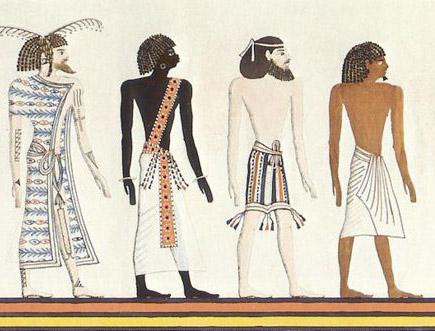
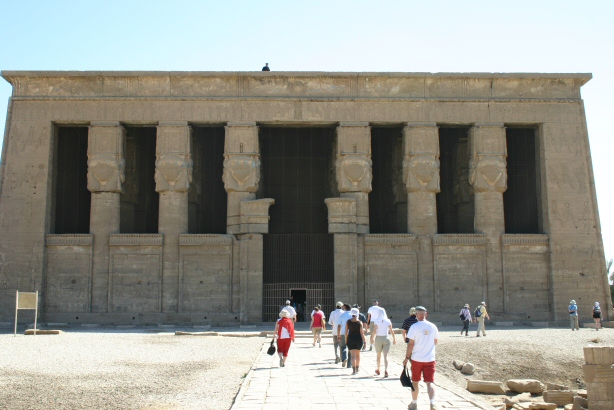
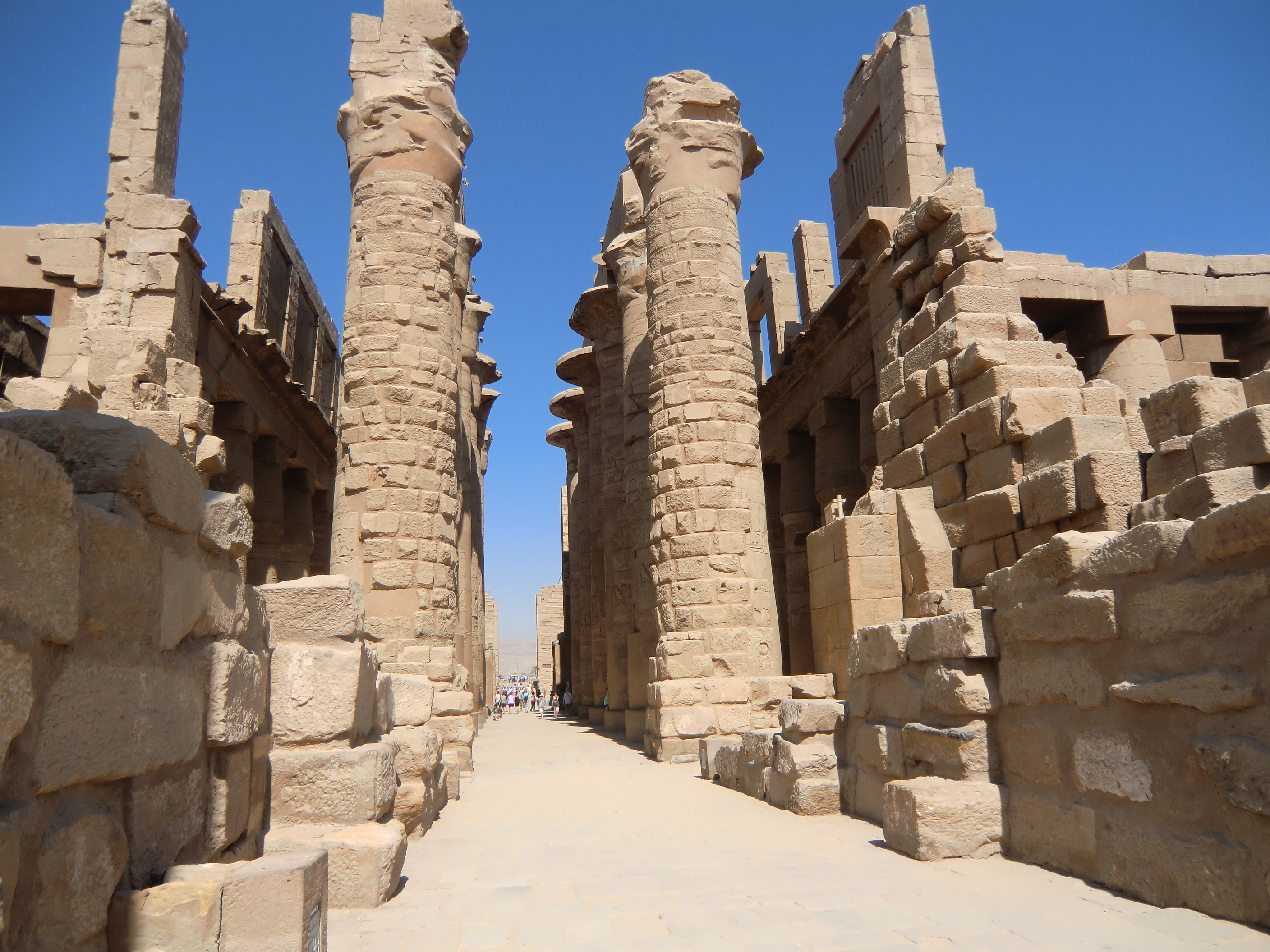
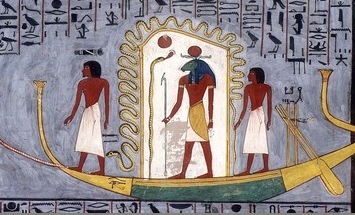
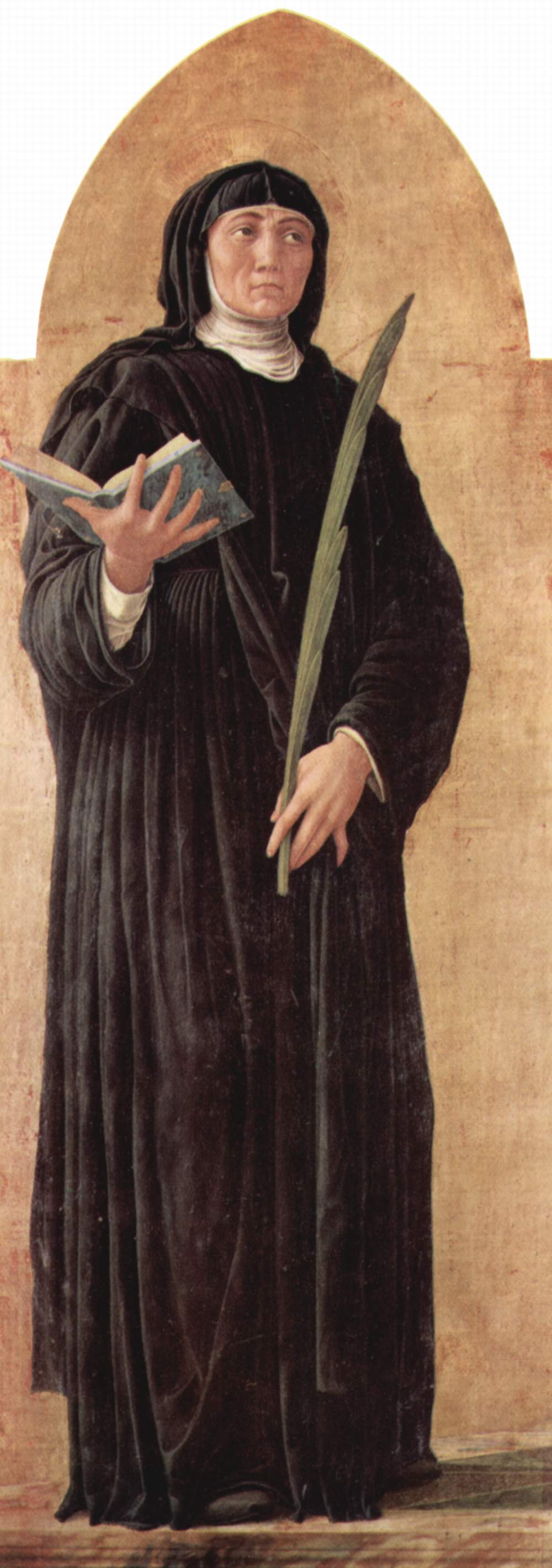
.jpg)
